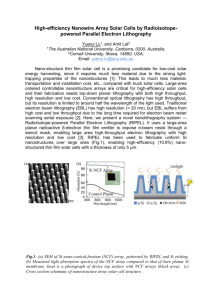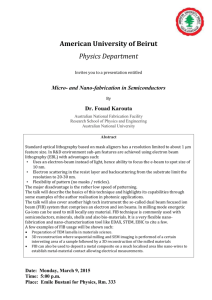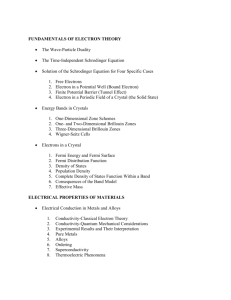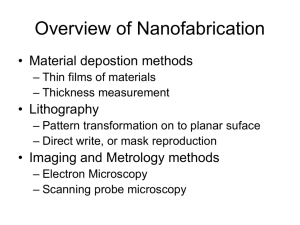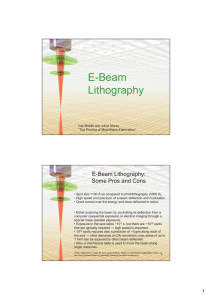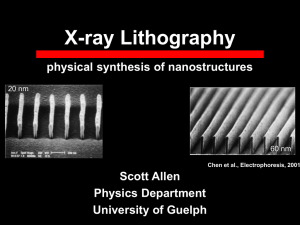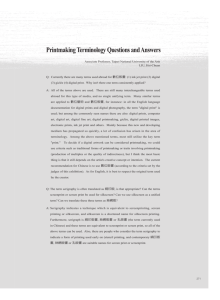Electron Beam Lithography
advertisement
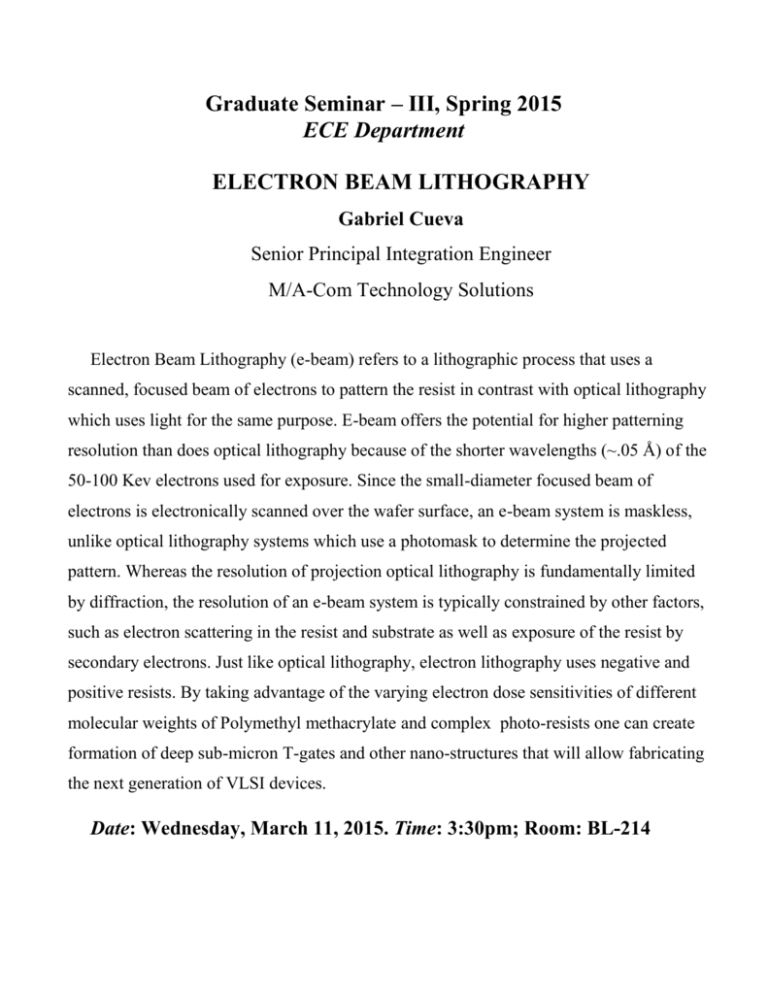
Graduate Seminar – III, Spring 2015 ECE Department ELECTRON BEAM LITHOGRAPHY Gabriel Cueva Senior Principal Integration Engineer M/A-Com Technology Solutions Electron Beam Lithography (e-beam) refers to a lithographic process that uses a scanned, focused beam of electrons to pattern the resist in contrast with optical lithography which uses light for the same purpose. E-beam offers the potential for higher patterning resolution than does optical lithography because of the shorter wavelengths (~.05 Å) of the 50-100 Kev electrons used for exposure. Since the small-diameter focused beam of electrons is electronically scanned over the wafer surface, an e-beam system is maskless, unlike optical lithography systems which use a photomask to determine the projected pattern. Whereas the resolution of projection optical lithography is fundamentally limited by diffraction, the resolution of an e-beam system is typically constrained by other factors, such as electron scattering in the resist and substrate as well as exposure of the resist by secondary electrons. Just like optical lithography, electron lithography uses negative and positive resists. By taking advantage of the varying electron dose sensitivities of different molecular weights of Polymethyl methacrylate and complex photo-resists one can create formation of deep sub-micron T-gates and other nano-structures that will allow fabricating the next generation of VLSI devices. Date: Wednesday, March 11, 2015. Time: 3:30pm; Room: BL-214
